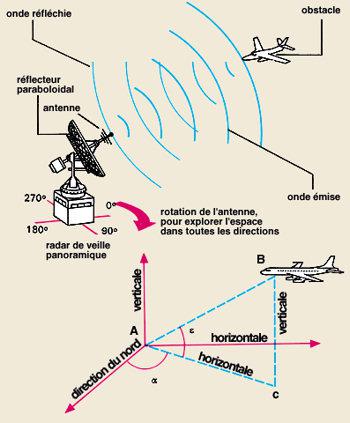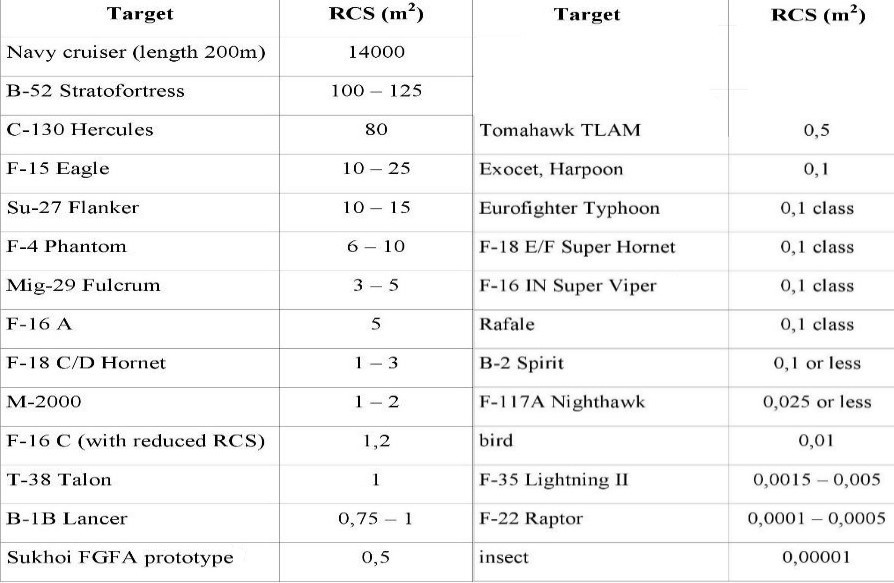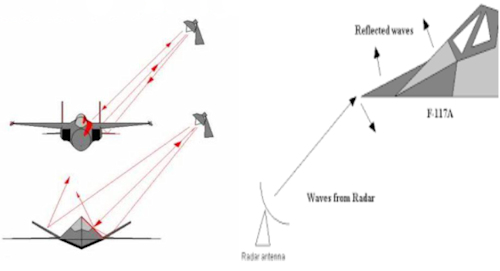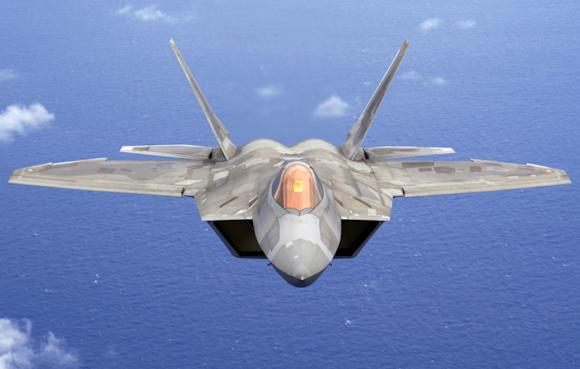The need to hide in the eyes of the enemy has been an important military factor since ancient times. An example is the battle of the Teutoburg forest of 9 AD, in which three Roman legions and 6 auxiliary cohorts were annihilated by a coalition of Germanic tribes led by Arminius. The barbarian built an embankment 600 meters long parallel to the path followed by the Roman army and hid most of his forces there. With the passage of unsuspecting enemies, the Germans unleashed a devastating surprise attack inflicting one of the worst military defeats in Rome on its history.
With the birth of radars, hiding from the enemy sight has taken on a new meaning, expanding this concept to the whole electromagnetic spectrum and no longer only at the frequencies visible by the human eye. Especially in the aeronautical field, following the development of the various forms of anti-aircraft defense observed during the Second World War, the importance of finding solutions to obtain the "low observability" of its aircraft became capital. The Soviets and Americans funded several studies on this by starting to develop the so-called stealth technologies.

It is important to emphasize that the word is translatable into "stealth", not "invisibility". This aspect defines exactly what the purpose of this philosophy is, that is decrease its evidence to observation by the enemy. In fact, it is not possible to obtain an aircraft that is completely invisible to radar.
So what are the strategies pursued in the design phase to make a stealth aircraft?
First of all, it is important to understand how a radar works. This acronym (RaGod detection and ranging - radio detection and distance measurement in Italian) indicates one or more antennas capable of emitting, receiving and analyzing a signal in the form of an electromagnetic wave (radio or microwave waves) in order to determine the position and possibly the speed of objects (defined target) that interacted with these electromagnetic waves.
The radar antenna then emits a signal into space, that wave is reflected by the target in various directions including the one connecting with the radar, the return signal received by the antenna is analyzed.
From this analysis we obtain the time that has elapsed between the emission of the wave and its reception.
Knowing the propagation speed of the electromagnetic wave (in vacuum it is equal to the speed of light) you can easily calculate the antenna-target distance:

For the calculation of the direction in which the target is located, instead, directional antennas (i.e. antennas that emit an electromagnetic wave only in a certain direction) are used.
Another useful concept for understanding stealth technologies is to Cross Section Radar. The RCS is a measure of how much power is reflected towards the radar by the target "illuminated" by the electromagnetic wave sent and is therefore a measure of how much the object is detectable by the radar itself. The smaller this parameter, the more difficult it is to detect the target at a certain distance since less power returns to the radar and is therefore indistinguishable from what is the "background noise", ie from disturbances. The RCS therefore also affects the maximum distance at which a target can be identified. For example, the RCS associated with a DC-9 is in the order of 20 while that of a car stands at 100, therefore with the same radar and conditions the car can be identified at a greater distance from the antenna compared to the DC-9. This parameter essentially depends on the shape and geometry of the target, on the materials of which it is composed (especially on its surface), on its position and angle with respect to the radar and to a minimum extent on its size. For this reason it is possible that a DC-9, thanks to its rounded shapes, has a smaller RCS than a car despite the certainly larger dimensions.

(In the estimated RCS table of some military aircraft)
The stealth design therefore aims to reduce the radar cross section of the aircraft. To achieve this, several methods are followed:
-
 Shaping: the idea behind this method consists in designing aircraft shapes and surfaces oriented in such a way as to reflect the electromagnetic wave incident in other directions than that which connects the aircraft to the radar. We therefore try to avoid that any point of the plane has the surface facing the possible position of an enemy radar. The application of this method is particularly visible on the Lockheed F-117 Nighthawk. Its implementation however hides problems related to aerodynamics, as such particular and angular shapes degrade its performance making computerized tools necessary for the stability and control of the vehicle. The idea of shaping also includes the idea of transporting loads (weapons, etc.) in special internal bays so that these, whose shape cannot be particularly optimized, do not contribute to the overall RCS of the aircraft . This strategy is implemented on the Lockheed F-35.
Shaping: the idea behind this method consists in designing aircraft shapes and surfaces oriented in such a way as to reflect the electromagnetic wave incident in other directions than that which connects the aircraft to the radar. We therefore try to avoid that any point of the plane has the surface facing the possible position of an enemy radar. The application of this method is particularly visible on the Lockheed F-117 Nighthawk. Its implementation however hides problems related to aerodynamics, as such particular and angular shapes degrade its performance making computerized tools necessary for the stability and control of the vehicle. The idea of shaping also includes the idea of transporting loads (weapons, etc.) in special internal bays so that these, whose shape cannot be particularly optimized, do not contribute to the overall RCS of the aircraft . This strategy is implemented on the Lockheed F-35. -
Radar-absorbent materials: the radar-absorbent materials (RAM) are compounds capable of converting part of the energy of the incident signal into heat, thus reducing the power of the reflected signal. These materials are particularly useful in areas where shaping can be adopted only marginally or cannot be used completely, as in the case of the leading edge of the wings and in the area of the air intakes. The maintenance of these materials is very expensive and their use causes an increase in the production costs and weight of the aircraft, a negative aspect that cannot be underestimated.
-
Electronic countermeasures: the electronic countermeasures are based on the idea of producing an alternative signal with respect to that reflected by the aircraft such that when added to the echo it goes to cancel or reduce strongly. For this to be possible, the target must know the direction, amplitude, frequency and phase of the electromagnetic wave radiated by the enemy radar and must be able to produce the correct disturbing signal, emit it at the right time and in the correct direction . Obviously the technical problems related to the development of this method are manifold and its incorrect implementation would cause a strong increase in RCS.
 Stealth technology has been a real one game changer in what is air warfare and is the main requirement for any fifth generation military aircraft. Currently this type of aircraft consists of only F-22 and F-35 (photo at the bottom), but soon the family should expand.
Stealth technology has been a real one game changer in what is air warfare and is the main requirement for any fifth generation military aircraft. Currently this type of aircraft consists of only F-22 and F-35 (photo at the bottom), but soon the family should expand.
What was once a technology whose "state of the art" was owned only by the United States of America, has now been developed by Russia (will see the light with Sukhoi Su-57 Pak Fa) and from China (it is present on the new one Chengdu J-20).
Doubts remain as regards the actual level of stealthiness of the "export version" of the F-35 (photo). In fact, the United States has always opposed the sharing of its knowledge on the subject stealth, for example preventing the sale of the F-22 (considered the flagship in this regard) to third countries albeit allies, as in the case of the United Kingdom. Furthermore, given the large estimated production of this aircraft, it is possible that to contain its costs, it was not aimed to create an aircraft that was as advanced as the F-22 with regard to this technology, but an aircraft that was difficult to identify by radars that work only in frequencies between 8 and 18 GHz (for example from radar fire control anti-aircraft batteries). However, no civilian has access to capacity data stealth of the plane, so all this remains mere speculation.

Sources:
Lecture notes of the radar course (Politecnico di Milano)
Images: US Air Force / web / Online Defense












